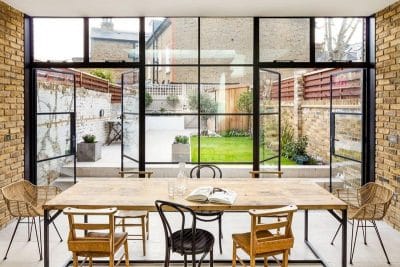
Improving the outside of a mobile home takes planning. Whether you’re dealing with years of wear or simply want something more modern, starting the process the right way makes a difference. Small changes can fix old problems. Bigger projects add long-term value. Before you begin, it helps to think about what matters most. You may want better weather protection, stronger materials, or lower energy costs.
Here’s how you can upgrade your home mobile home’s exterior:
Define the Goals Before You Start
Ask yourself what you want to accomplish. Do you need better insulation? Are you trying to lower your utility bills? Do certain areas feel outdated? List what matters most. That list will guide your decisions. It also helps you stay on track and avoid wasting time or money.
Some homeowners focus on curb appeal. Others want better comfort inside. There’s no single approach that works for everyone. However, having a clear goal early on makes the process smoother. Think about your timeline, too. If the work overlaps with bad weather, delays can happen. Plan your project seasonally and keep track of everything from the start.
Start with Replacing the Roof
This part of the home takes the most damage from wind, rain, and heat. If it leaks, sags, or shows cracked areas, don’t delay. A proper roof replacement helps protect every other surface below. It prevents water damage and energy loss and supports insulation performance.
Hiring experienced contractors matters. They can help you understand material choices and offer solid installation. A new system installed correctly won’t just improve looks. It increases comfort and safety, too. It also reduces the chances of future repair costs. Check your warranty and ask questions during your quote process so you know what to expect later.
Improve Drainage and Airflow
Moisture control and ventilation help prevent mold and wood rot. Many mobile homes lack enough vents. Others have blocked gutters or poor drainage routes. Fix these problems early.
Start with downspouts and make sure water flows away from your foundation. Then look at the airflow around your skirting or in the attic area. Add vents if you don’t already have them. This step keeps materials dry and helps your insulation last longer. Some homes also benefit from installing moisture barriers. These are simple to apply and help extend the life of your insulation, wiring, and ductwork. Don’t ignore mildew smells. They usually point to air that’s not circulating properly.
Replace Worn Skirting Panels
Skirting protects the underbelly of your home from animals, drafts, and water. It also gives the structure a finished look. If panels are cracked, loose, or warped, it may be time to replace them.
Newer materials are stronger and easier to maintain. Look for vinyl, steel, or insulated versions depending on your climate. Make sure the new skirting fits snugly and has enough vent openings to promote airflow. Pay attention to areas near plumbing or electrical lines—panels should cover these without blocking access. If needed, have a pro help with measurements. Poor installation causes gaps, which attract rodents and moisture.
Update the Siding for Better Performance
Old siding can fade, crack, or trap moisture. It may also hurt your energy efficiency. Swapping it out makes a big difference. Look for low-maintenance choices like fiber cement, insulated vinyl, or aluminum.
Pick something that matches your color preference and local weather. When installed correctly, new siding helps your home handle heat, rain, and cold more effectively. It also requires less upkeep than older materials. You may even notice improved indoor comfort once old gaps and cracks are sealed. For a better result, inspect the wall sheathing during the removal process. Replacing weak boards now will save trouble later.
Replace Old Doors and Windows
Outdated doors and windows often let in drafts and moisture. They may also cause higher energy use. Replacing them helps create a more comfortable interior and can improve temperature control. Choose materials that hold up well during seasonal changes. For windows, double-pane or impact-resistant models are smart options. Look for tight seals and proper alignment when installing new units. Solid entry doors with strong locks add both comfort and peace of mind. If you’ve had issues with sticking frames or leaking corners, it’s probably time for an upgrade. When measured and installed correctly, new openings work better, last longer, and look cleaner from both sides of the home.
Add or Improve Lighting Features
Lighting adds both safety and convenience to your outdoor layout. Wall-mounted fixtures, pathway lights, and motion-sensor units work well around entryways or walkways. Consider energy-efficient options like LED bulbs or solar-powered kits. If you already have wiring in place, check for wear or loose connections. Upgrading old switches or adding a timer can also be helpful. Pay attention to areas that stay dark at night—poor visibility increases accident risk. You don’t need to spend much to make a difference. A few small changes brighten up high-traffic areas and give your mobile home a more inviting look after sunset without using too much power.
Repair or Replace Entry Steps and Rails
Entry steps and rails need to be sturdy and safe. Over time, wood can split, nails can pop out, and surfaces may become slippery. Make it a point to check for soft spots, loose parts, or unstable joints. If you notice damage, replace the parts right away. Use treated lumber or composite material for better results. You can also look into aluminum or metal railing options if you’re dealing with heavy rain or snow. Keep each step level and secure. For added safety, install grip tape or treads. Choose rail designs that match the home’s look without blocking movement or visibility.
Planning changes to your mobile home’s exterior should feel practical, not overwhelming. Focus on the areas that protect, support, and improve everyday use. Start with the essentials, like structure, drainage, and airflow. Then move on to changes that add convenience or appearance. Always use quality materials, set realistic goals, and hire help for jobs that go beyond your skill level. Whether you’re handling minor fixes or bigger projects like replacing the roof, each step matters. The result will be a home that holds up better, feels more comfortable, and reflects the effort you put into getting it done right.








